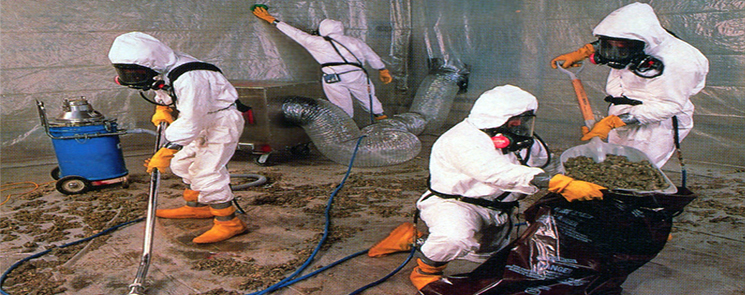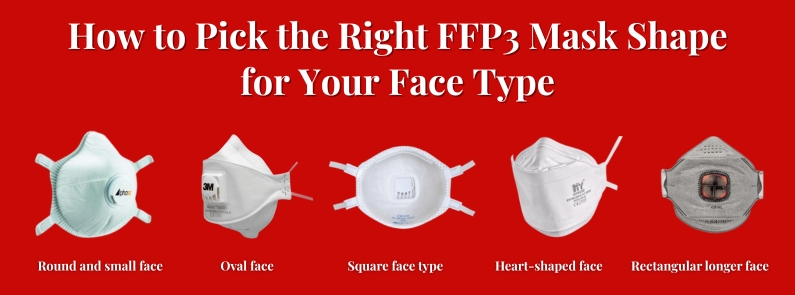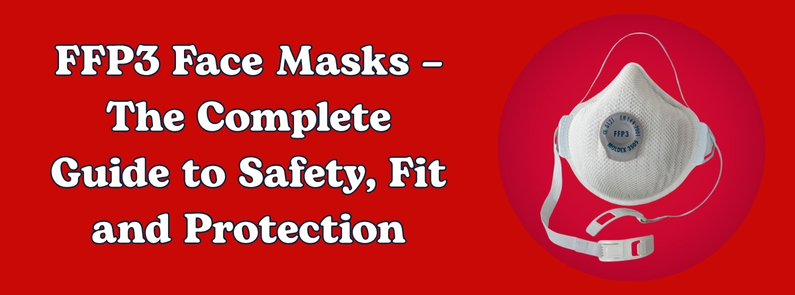
High tensile strength, durability and good heat resistance, led to the extensive usage of asbestos in building materials, insulation and hundreds of consumer goods during the 20th century. Despite its popularity, it was later discovered that inhalation of airborne asbestos fibres can lead to a range of lethal diseases such as asbestosis, malignant mesothelioma, and lung cancers.
Though the use of asbestos has effectively ceased in the UK following a ban in 1999, the risk of occupational exposure still persists. Work processes such as demolitions, refurbishment of old structures, repair of brakes, fire fighting, cleaning-up of natural disasters and maintenance of old refinery installations, etc. releases asbestos dust which can have a devastating effect on employee health. To eliminate or minimize the hazards associated with asbestos exposure it’s important to be aware of how to work safely around the dangerous toxin.
Adopt Safe Work Practices:
The employers have a legal responsibility to ensure the workplace is safe and does not present a risk to the welfare of those on the job. For starters, the asbestos-prone worksites must be segregated with warning signage indicating the risks and dangers involved. Also, access should be allowed to only to authorised personnel with adequate training for handling the harmful toxin with deftness. Furthermore, all workers must consistently practice safety procedures with appropriate equipment and protective gear to mitigate the danger of any potential asbestos-related diseases down the road.
Use Appropriate Personal Protective Equipment (PPE):
Disintegrating and fraying asbestos emits extremely fine, microscopic fibres into the air that can stick to hair, clothes and the skin. To prevent a possible health catastrophe in the future, personnel need to use asbestos PPE, respirators and the right clothing when performing a task in an area where asbestos dust is likely to be generated. Moreover, they should be educated and instructed about the maintenance of the equipment.
Full-Body Protective Clothing:
Workers should wear snug, one-piece disposable coveralls made from a synthetic, waterproof material that can resist fibre infiltration, heat stress, fire, and electrical threats. The clothing should offer complete protection from head to toe. It should be sans open pockets or fastenings as they can get contaminated. Also, the clothes worn under coveralls should not be shaken or brushed. Superficial cleaning of the protective gear by vacuuming or water hosing before removal is a must to prevent the asbestos dust from being transported outside the worksite. The coveralls should be properly sealed in asbestos waste bags for safe dumping in an approved spot.
Ensure Respiratory Protection:
All the persons working inside the contaminated area must wear disposable full or half masks for respiratory protection. It’s important to select a dust mask designed specifically for the purpose. FFP3 mask asbestos fitted with a class P3 filter cartridge and boasting a protection factor of APF20 is appropriate. Though slightly more expensive than the standard masks it is extremely effective in thwarting inhalation of the airborne toxins. The respirators must be clearly marked, comply with the regulatory standards and have a comfortable and airtight fit. Workers must wear the mask until all work and clean-up are accomplished and the tainted clothing removed, bagged and sealed. They must clean the masks daily, change the filters whenever the need arises and replace them on detecting wear and tear signs.
Sport Gloves, Goggles & Footwear:
Besides wearing a JSP mask and protective clothing, the staff must put on goggles to prevent eye irritation. Sporting footwear like gumboots with anti-slip soles is practical as it is easy to clean and effectively decontaminate. It must be noted that torn shoes should be repaired or replaced. The use of disposable gloves is a must especially if the concentration levels of asbestos at the work front are high. And yes, the gloves used must be sealed and discarded as asbestos waste.
Miscellaneous Measures:
To get rid of any asbestos dust that may be lingering on the body after completing the work-shift and changing into street clothes, the employees need to shower thoroughly, and wash their hair, hands, and fingernails as well each time.
In a nutshell, it's crucial for employees to understand the perils they can encounter when dealing with asbestos at the job site. The key is to be vigilant and take the necessary preventive measures throughout the work processes to remain safe and protect their health.



